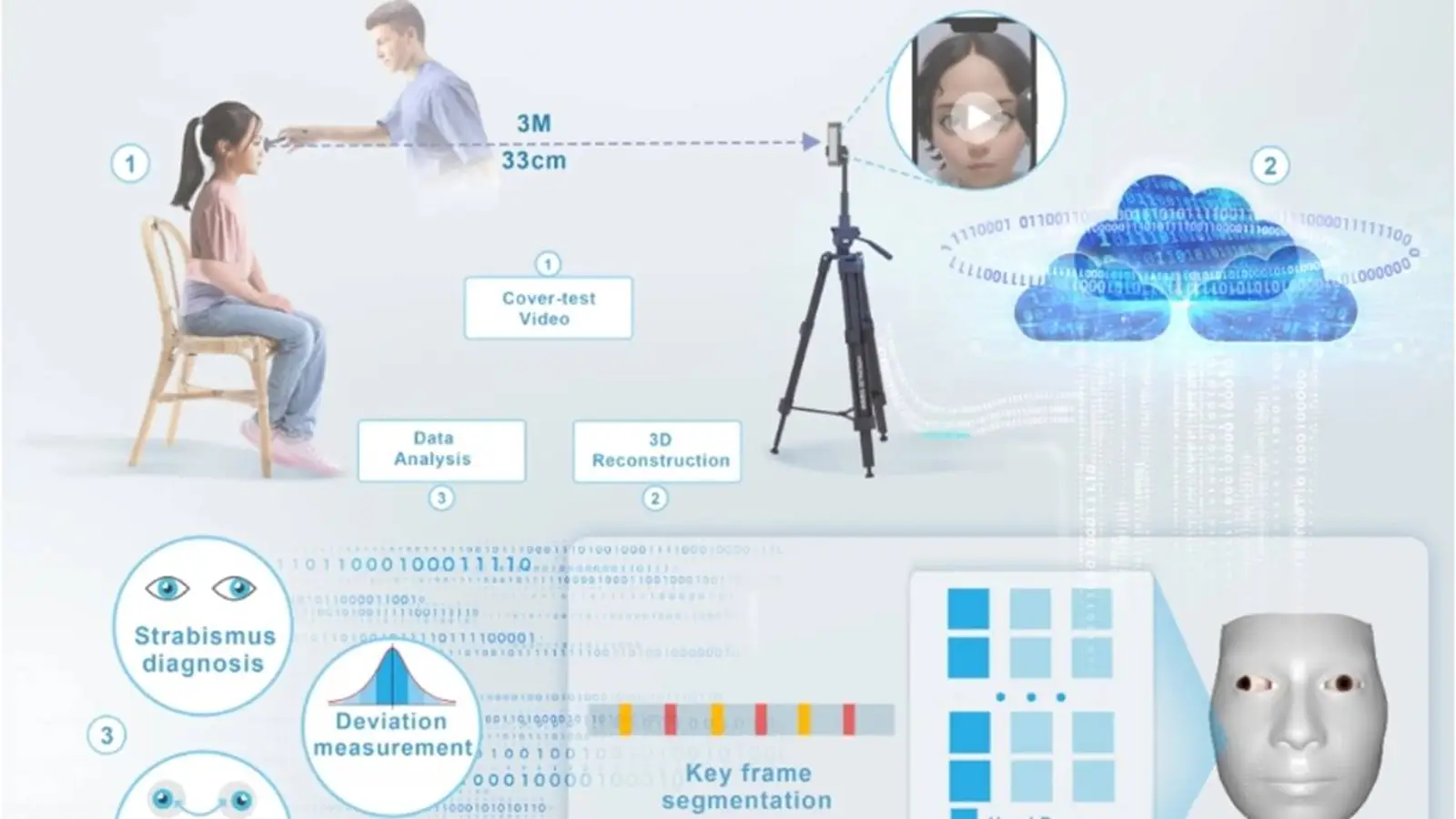DRS: 30-second smartphone screening for childhood strabismus
Chinese researchers unveil DRS, a 30-second smartphone test that measures eye deviation and detects childhood strabismus with 98% PACT agreement at scale.
Chinese researchers unveil DRS, a 30-second smartphone test that measures eye deviation and detects childhood strabismus with 98% PACT agreement at scale.

© ITHome
Chinese researchers have devised a method to detect strabismus in children in just half a minute using a standard smartphone. The condition is common in childhood and, left unchecked, can lead to serious vision problems. The diagnostic hurdle is familiar: young patients often struggle to describe what they feel, while early outward signs are easy to miss.
Until now, gauging the degree of strabismus demanded an experienced ophthalmologist and a set of complex procedures. Existing automated tools never truly took off—either the hardware was too costly or the accuracy fell short. Against this backdrop, the new approach could mark a genuine breakthrough in pediatric eye care.
A joint team led by Professor Lin Haotian of the Center of Ophthalmology at Sun Yat-sen University and Associate Professor Xu Feng of Tsinghua developed the Digital Ruler of Strabismus (DRS). Built on a digital mask principle, it needs only a short clip—about 30 seconds of video captured by a phone’s camera. After processing, the software automatically calculates the angle of eye deviation and determines the severity of strabismus with high accuracy. The idea is disarmingly simple—and that simplicity is precisely its strength.
The findings were published on October 23, 2025, in an affiliated journal of The New England Journal of Medicine. The technology has already secured three patents. Its effectiveness was assessed in a large clinical study conducted across three leading ophthalmology centers in China. Researchers benchmarked DRS against the gold-standard prism and alternate cover test (PACT). The mean measurement error was just 4.5 prism diopters, and agreement with the traditional method reached 98%.
DRS not only measures how severe the misalignment is, it can also distinguish between inward, outward, and latent forms of strabismus. In addition, it tracks dynamic changes in patients with intermittent strabismus, capturing both the speed and the moment when normal alignment is restored. This gives clinicians a way to follow the course of the condition in real time.
Compared with existing systems, the new method stands out for its precision, simplicity, and accessibility. It does not require expensive equipment and can be used in small clinics or even in schools. The developers note that the technology opens the door to large-scale digital vision screening for children, especially in regions with limited medical resources, helping identify problems that might otherwise go unnoticed. Putting screening on a device families already carry lowers the barrier to early checks—and that could make all the difference.